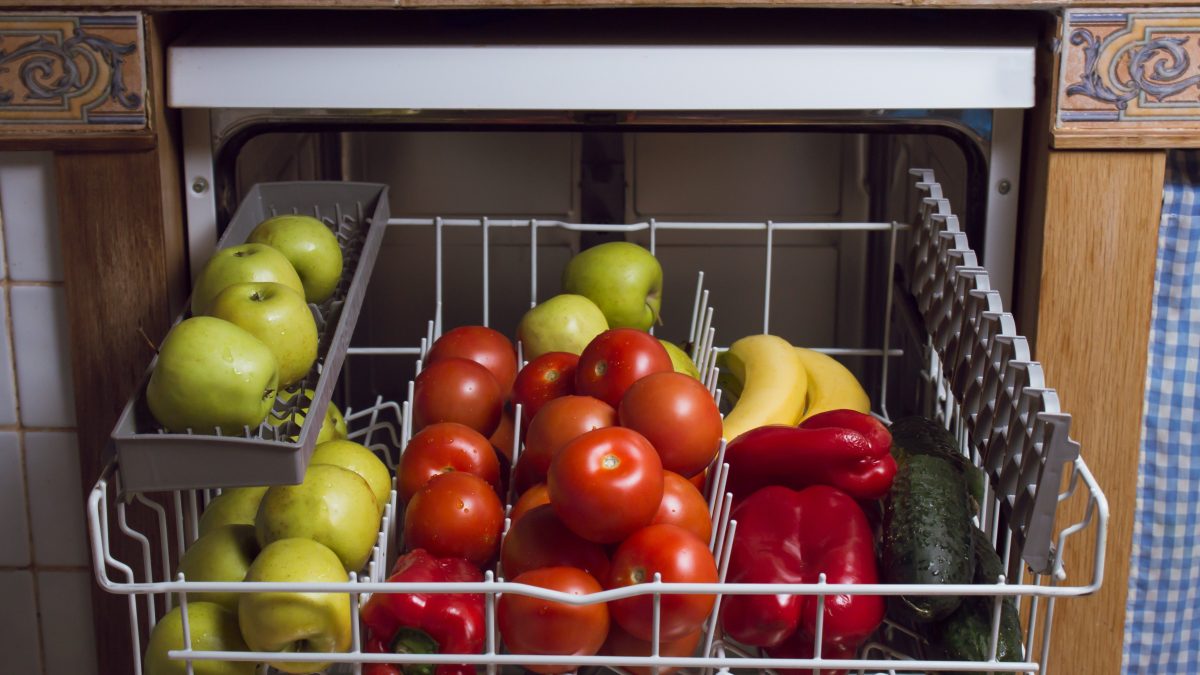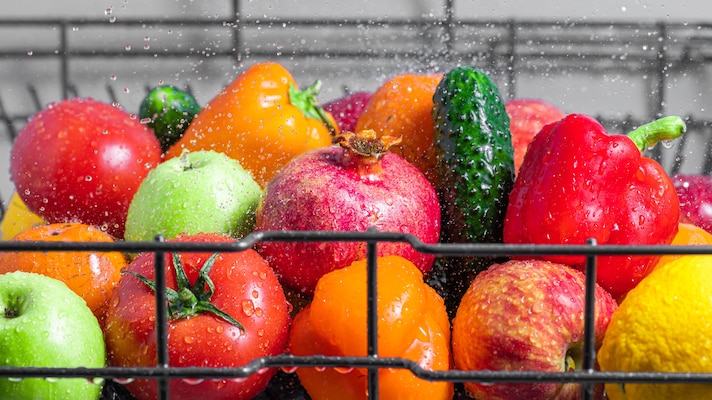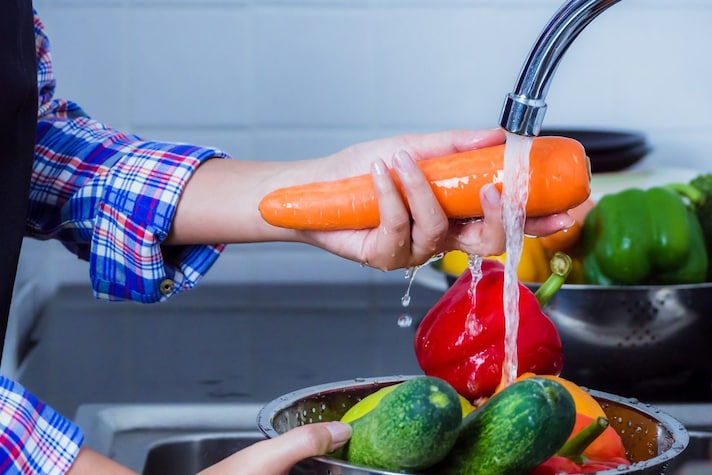
The former TikTok trend is really dangerous and we tell you right away not to follow it: fruit and vegetables should not be washed in the dishwasher. On the Chinese social network, people are loading the appliance with distilled white vinegar and cold water. Users are really appreciating it but this method can lead to serious risks for food safety and is not recommended because detergent residues could contaminate the fruit and vegetables, and dirt or food residues could clog the dishwasher.
Why Fruits and Vegetables Should Not Be Washed in the Dishwasher
Although the dishwasher is an ally in the kitchen, it is not the ideal appliance for cleaning fruits and vegetables. It is not safe to disinfect food in an appliance in which you wash dirty meat or fish dishes because you could contaminate the vegetables with harmful bacteria as well as detergent residue.

In addition to the food risk, there are possible problems caused to the fruit and vegetables themselves: the strong jet of water can damage their skin, especially if delicate, accelerating deterioration. Then there is an environmental issue: it is a waste of water and electricity. The quickest things are not always the best things to do, especially in the kitchen, so no: you should not wash fruit and vegetables in the dishwasher. By washing by hand, you can ensure more effective and respectful cleaning of the food, preserving its nutritional properties. If all this is not enough for you, know that this method can also lead to the breakdown of the dishwasher.
Practical Tips for Washing Fruit and Vegetables
Washing fruit and vegetables carefully is a seemingly trivial gesture, but it is fundamental for eliminating residues of soil, pesticides and bacteria that could be harmful to our health.

Under running water, rinse each piece thoroughly, rubbing gently with your hands or a brush to remove stubborn dirt. For a deeper clean, add a tablespoon of baking soda to the water and let it soak for a few minutes. Baking soda has antibacterial properties and helps eliminate pesticide residue.
For leafy vegetables, such as lettuce or spinach, it is advisable to immerse them in a basin of water with a little white vinegar for a few minutes. Vinegar, thanks to its antibacterial properties, helps eliminate any parasites. Once washed, we dry fruit and vegetables thoroughly with a clean cloth to avoid the proliferation of bacteria.
;Resize,width=767;)
